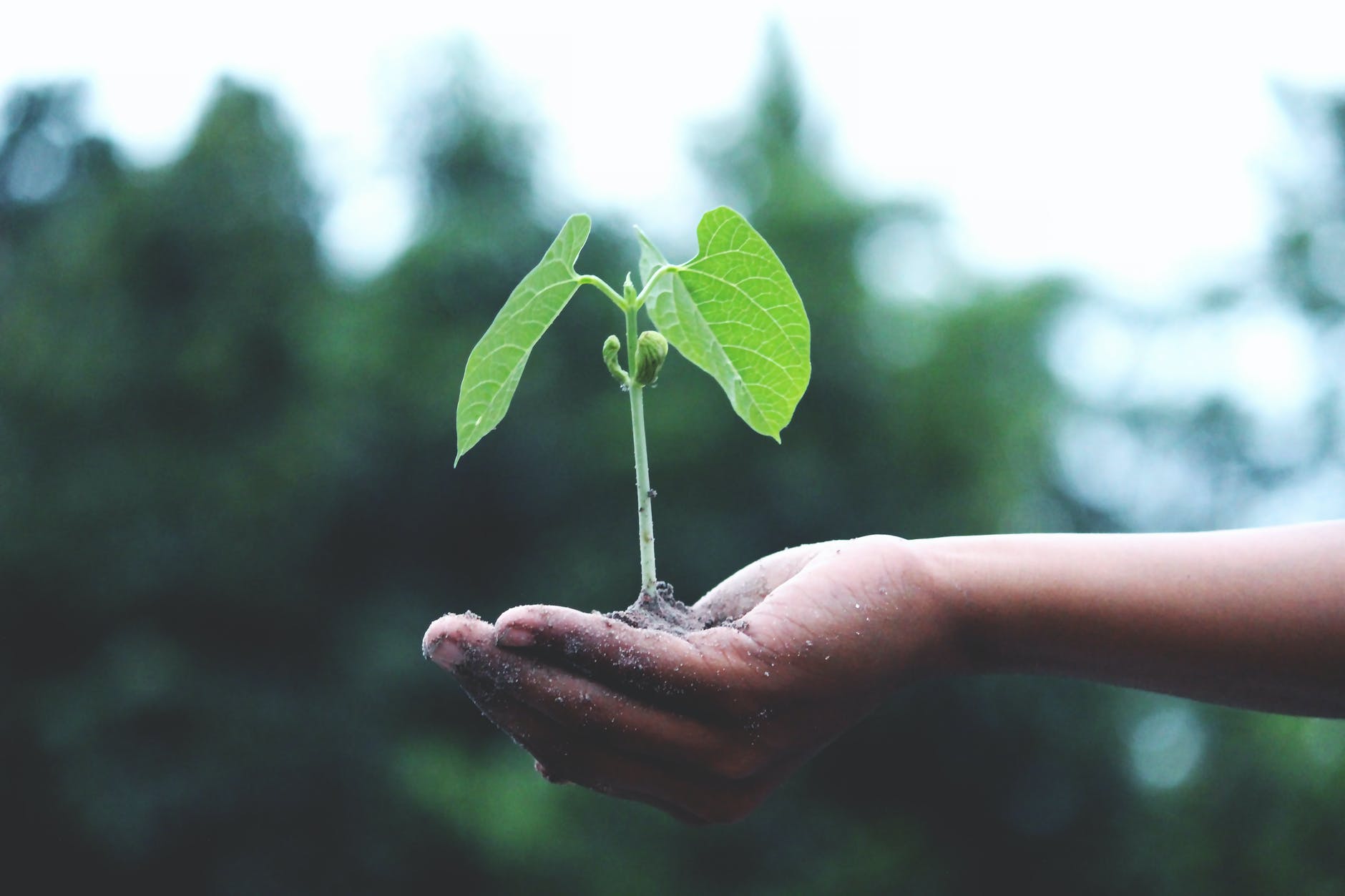
Photo by Akil Mazumder on <a href="https://www.pexels.com/photo/person-holding-a-green-plant-1072824/" rel="nofollow">Pexels.com</a>
Every year, 5 June is observed as World Environment Day (WED) several events and initiatives are organised to encourage awareness and involvement of people for the protection of the environment throughout the world.
In the year 2022, Sweden is the host of world environment day. Being the host, this year Sweden is going to celebrate the World Environment Day. The theme of World Environment Day this year is ‘ Only One Earth‘.
World Environment Day Theme 2022
Ecosystem Restoration refers to the protection of our planet’s biodiversity and preventing the degradation of our natural resources. As we are rapidly depleting Earth’s natural, renewable resources and doing irreversible damage to the environment, this calls for immediate action to kickstart ecosystem recovery for ourselves and future generations.

This day calls for each one of us to take action, rethink our environmental impact and make smart changes to our lifestyle if we want to continue calling Earth our home. Because there is no Planet B. There are plenty of meaningful ways to start contributing to #GenerationRestoration and we have some ideas for you to participate in this WED from home.
So here are 20 easy ways each of us can celebrate World Environment Day every day.
1. Follow the 3 R’s.
Look for ways you can Reduce, Reuse and Recycle throughout your home. You’ll save natural resources, energy and money, and you’ll reduce waste sent to landfills.
2. Conserve energy at home.
From turning off lights and electronics when not in use, to using a programmable thermostat, to changing your air filter regularly, there are many small things you can do to save energy and reduce greenhouse gas emissions, while saving money on your utility bills.
3. Reduce paper waste and junk mail.
Think twice before printing things at work and home. You can reduce your mail by using online payment options that avoid paper bills. And there are services that will remove your name from unwanted mailing lists to reduce junk mail.
4. Recycle your electronics.
Your old, unused or broken computers, tablets, phones and other electronics can often be recycled for free by stores, manufacturers and local governments, which saves natural resources while also reducing pollution.
5. Give your car a break.
Whether you’re commuting to work or running errands, you just might be able to leave your car at home, even a few times a week. Walk, ride a bike, carpool or take public transportation. You’ll save money, reduce greenhouse gas emissions, and get more exercise.
6. Turn off the tap.
Whether you’re brushing your teeth, washing dishes, or taking a shower, turn off the water when it’s not needed.
7. Replace your bulbs.
Compact fluorescent light bulbs (CFLs) and LED bulbs may cost more than incandescent bulbs, but they will save money over the long run, last longer, and use up to 90 percent less energy.
8. Bring your own bags to the store.
Use a backpack or bag from home, or buy reusable bags that you can keep in your car and use again and again.
9. Buy local.
Buying local produce and other items reduces shipping distances from food sourced overseas, and also supports local businesses and communities.
10. Act local.
Get involved in environmental work in your local community. Local schools, governments, and non-profit organizations often offer opportunities for volunteers to get involved in cleaning up parks, restoring habitats, and other efforts to make communities greener.
11. Watch a documentary
Watching a documentary is one of the best ways to learn about our environment and making sustainable choices to ensure a safe and healthy future for generations to come. Here are some of the documentaries that you can line-up for viewing — Pacificum: Return to the Ocean (Netflix), Cowspiracy (Netflix), The 11th Hour (YouTube) among many others.
12. Take a virtual garden or museum tour
With many of us staying indoors, WED is a great day to start having an environment-related conversation with your kids and teach them about the preservation of natural resources. You can do fun garden activities with them or take them on the virtual garden, zoo or museum visits available online.
13. Shift to reusable water bottles and straws
Plastic straws have been a big menace to the oceans. Get on board to ditch them this WED and invest in cleaner and recyclable options such as paper, bamboo or metal straws and BPA-free, glass, stainless steel or copper bottles.
14. Start a new sustainable diet
Our meals can leave a huge carbon footprint if they are not sourced in environment-friendly ways. To contribute to combating this issue, you can start a new diet at home or make amends in your catering policy by switching to seasonal, sustainable and local plant-based products. Vegan, vegetarian and eco-friendly Keto diets are examples of some carbon-cutting options that involve giving up animal-based foods entirely.
15. Ditch the single-use plastic containers at home
Around 40 percent of the plastic used in the world is single-use. It will be environment-friendly to phase out the containers made of single-use plastic at your home and swap them for cleaner and sustainable alternatives such as reusable glass containers, stainless steel lunch boxes and mason jars.
16. Clean your indoor air
Air pollution comes from a variety of sources such as dust, odours, improper ventilation and impacts the indoor air as well. Take this opportunity on WED to clean up your AC vents and fridge coils, replace filters on HVAC vents and declutter household cleaning supplies that contain artificial substances. Cleaning your electronic household items like the AC and fridge also ensures that they use less energy to regulate temperature.
17. Cook an environment-friendly meal
Cook a meal at home using environment-friendly and seasonal food items bought from the local farmer’s market. As you select each item, read the labels thoroughly to determine transportation impacts on the environment and get your kids involved in the process as well. Try to make it a zero-waste meal as well.
18. Invest in energy-efficient appliances
Whenever possible, invest in energy-saving and star-rated appliances. You can start small by switching to LED light bulbs that consume less energy and significantly reduce your bill in the long run.
19. Start your own compost
Composting is a great way to improve your backyard garden and reduce the amount of garbage from your house that goes to landfill. Start your first compost pile by taking almost any leftover from your kitchen such as eggshells, vegetable scraps, coffee grounds, flowers, tea bags and old newspapers. Turn your mixture every week and after a few weeks, your compost will turn into soil that acts as a natural fertiliser for plants. Here’s a video to help you start organic composting at home.




















